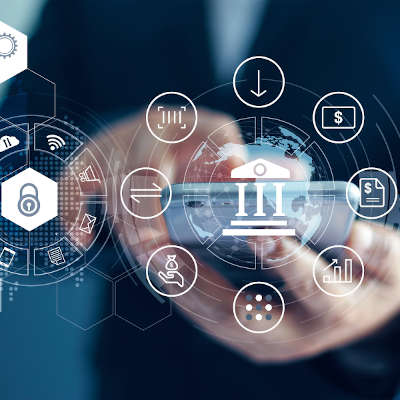Imagine how much harder life would be in the Covid-19 pandemic without the internet. A huge variety of online services and mobile apps have allowed us to avoid contact and keep functioning while staying safe. Nationally, in just a few months, use of mobile banking has increased by 50 percent. The downside is that banking apps have become a more attractive target for hackers, according to the Federal Bureau of Investigation. This is what their warning said about safeguarding your banking security:
“As the public increases its use of mobile banking apps, partially due to increased time at home, the FBI anticipates cyber actors will exploit these platforms.”
Check out the entire announcement – it’s worth it. It has a lot of information about banking scams and a number of tips on how to protect yourself when using all sorts of apps, as well as banking security when using mobile services. But if you don’t have the time right now, we’ve assembled some of the key points so that your financial interests and online safety are protected.
The Importance of 2FA
Two-Factor Authentication, sometimes known as Multi-Factor Authentication, is something you may have come across already. It involves another identifier to make sure that the person accessing an account is the account owner. In order to use the application, users must enter a unique, one-off code that is generated by apps such a Google Authenticator, Duo, Authy or LastPass Authenticator, to get through the additional layer of security.
All accounts you use, and especially those which involve financial or other sensitive data, should be protected by 2FA or MFA. So don’t cut corners – for your safety, make sure you set it up.
Use Your Passwords Effectively
Not all passwords are created equal – literally. It may be easy to use your pet’s name or your birthdate, but these types of password can be weak. Using a unique string of characters (upper and lower case), symbols and numbers, or combinations of unrelated words, is the smart option. Also, make sure that you don’t use the same passwords for all your different accounts.
Think Before You Click
It’s pretty simple but it’s one of the most important pieces of advice you can take on board: if you don’t know the sender, or the site a link will take you to, then don’t touch it. Only click on links that you’re 100% sure of. This also applies to downloading apps. If you want your bank’s online banking app, download it from a reputable app store that verifies apps available for download. If there’s a link on the bank’s website it should take you to the Google Play or Apple App sites. If it doesn’t, stop immediately.
If in Doubt, Ask Your Bank
Online banking scams cost the banks money, as well as you, and they’re there to help. If you get emails that seem odd (or requests for information like account numbers, PINs and passwords) then beware. Ask your bank (making sure you’ve got the number from their official website, or the back of your card or a paper statement, not from an email you’ve received) about anything that seems strange, including your banking app not working as it should. We’re really pleased that the FBI has flagged this up, because it’s often overlooked.
If something seems off, don’t tell yourself you’re being over-suspicious. It may take a couple of minutes to speak to your bank, but the old saying is very true when it comes to online banking security – better safe than sorry. Remember that you bank will never ask you for your full banking details over the phone, so if anyone does, the alarm bells should start ringing.
Vigilance and understanding the signs of a scam is key to staying safe online and keeping the cybercriminals away. For more information on keeping your finances secure from banking scams, reach out to the IT security professionals at Quikteks today at (973) 882-4644.

